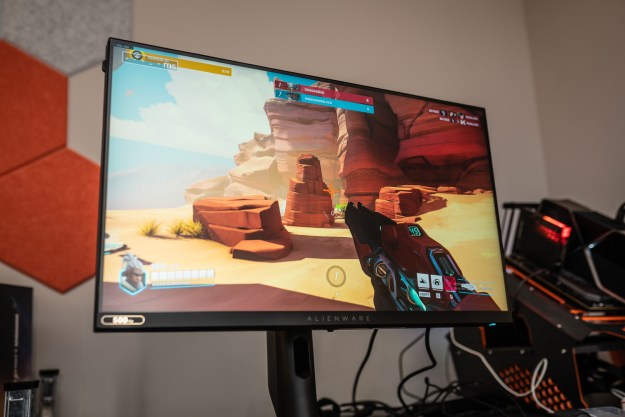
When it comes to displays, bigger is better. Following HP’s announcement of the 65-inch HP Omen Emperium 65 at CES earlier this year, rival Dell just announced a 75-inch 4K touch-enabled display. Unlike HP, which is focusing on the gaming market with its super-sized screen, Dell’s 75 4K Interactive Touch Monitor C7520QT is targeted at classrooms and environments that are geared for collaboration.
“Gen Zers indicate a strong preference for peer learning (75 percent) and teamwork (58 percent), and today’s classrooms are transforming into collaborative-friendly spaces that facilitate group learning and productivity,” Dell said in a press release. “The new large-format Dell 75 4K Interactive Touch Monitor (C7520QT), available this spring, is ideally suited as a primary classroom display or for group collaboration.”
With its large format and collaboration focus, the Dell 75 4K Interactive Touch Monitor may be a good alternative to Microsoft’s Surface Hub. In addition to supporting 20-point multi-touch InGlass touchscreen technology, like the Surface Hub, Dell’s display can also be used with a stylus for inking. Dell will ship two passive pens with its display, which the company claims will deliver zero lag. The monitor also supports Dell’s Screen Drop, which makes raising and lowering the display easier for all users.
In addition to the 4K UHD resolution, the panel also ships with anti-glare and anti-smudge coating, which helps reduce fingerprints and reflections on the screen. For its computing power, the monitor can also be paired with an optional Dell OptiPlex MicroPC. Adding the OptiPlex creates a modular all-in-one solution that will save space and allow users to upgrade the PC portion down the road, making the display more futureproof.
Dell’s display will cost $5,999 when it launches on April 30. For comparison, Microsoft’s first-generation Surface Hub starts at $8,999 for a 55-inch 1080p model. Pricing for the larger 84-inch Surface Hub with 4K resolution jumps to $21,999. Since the Surface Hub was initially introduced, Microsoft announced a Surface Hub 2 last year with a 50.5-inch multi-touch display with a
In addition to the large display, Dell also announced its Latitude 3300 for Education laptop and new Dell Chromebooks 3100, 3100 2-in-1, and 3400 models.
Editors' Recommendations
- IPS vs. VA displays: Which is best for your monitor or TV?
- Why I’m excited about Dell’s new 120Hz UltraSharp monitors
- The 3 futuristic gaming monitors TCL just announced look insane
- Dell’s new UltraSharp monitors have one major innovation
- Does Dell or HP make the best 16-inch laptop? You might be surprised


